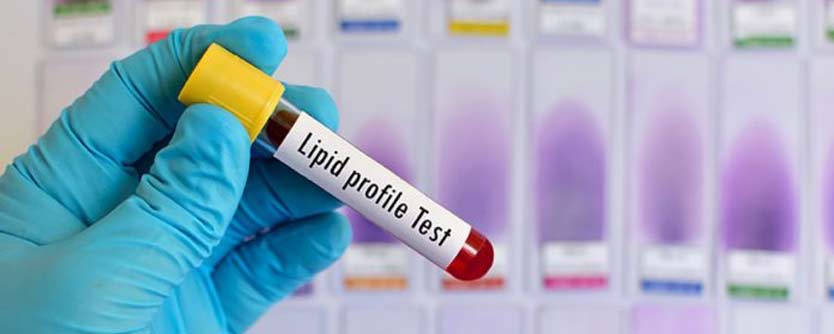Diseases which once affected older population are increasingly being witnessed in the younger population. Heart
[the_ad id=”6085″]
diseases which were once rare in the 30+ age group are noweess increasingly common. A popular and effective test for cardiac risk assessment is the lipid profile test. Also called the lipid panel test, this test measures good and bad cholesterol and total triglycerides in the blood.
More on lipid profile:
To know about lipid profile test, first let us understand lipids.
Lipids are essential organic molecules found in blood and stored in tissues and play an important role in the normal functioning of our body. Another term which is often discussed in association with lipid is cholesterol. Cholesterol is a form of lipid which is required by the body to maintain the rigidity of the cells by adding to the stability of the cell wall, in addition to performing other important functions including production of hormones, Vitamin D and bile acids.
A lipid profile test measures the following levels of cholesterol:
- LDL (low-density lipoprotein) or “bad” cholesterol: Sticks to the walls of the arteries (or any other blood vessel) and is the main factor causing coronary artery disease. If the condition is not treated for years, it can result in atherosclerosis culminating in the hardening and clogging of arteries.
- HDL (high-density lipoprotein) or “good” cholesterol: It removes the LDL from blood vessels and transports it to the liver where it can be reprocessed as it can move along with the bloodstream. High levels of HDL reduce the probability of heart diseases whereas low levels increase it.
- Total Cholesterol: This is the composite amount of cholesterol present in the body. A high level of cholesterol does not indicate an increased risk of heart disease because the high levels may belong to HDL which protects us from Coronary artery disease.
- Triglycerides: The excess fat in the body is converted to triglycerides, and stored in the fat cells of the body. The test is taken after 12 to 14 hours of fasting; medicines prescribed may be taken only if a doctor approves of it.
Indications of test results are presented below:
Total Cholesterol:
- Appropriate level: Less than 200 mg/dL
- Average but slightly dangerous level: 200 to 239 mg/dL
- Need doctor’s attention immediately: 240 mg/dL or higher
LDL or bad cholesterol:
- Appropriate level: 100 mg/dL or lower
- Average level: 100 to 129 mg/dL
- Average but slightly dangerous level: 130 to 159 mg/dL
- Risky Level : 160 to 189 mg/dL
- Need doctor’s attention immediately: 190 mg/dL or higher
HDL or good cholesterol:
- Appropriate level: 60 mg/dL or higher
- Average but slightly dangerous level: 40 to 59 mg/dL
- Need doctor’s attention immediately: 40 mg/dL or lower
Triglycerides:
- Appropriate level: 150 mg/dL or lower
- Average but slightly dangerous level: 150 to 199 mg/dL
- Risky Level : 200 to 499 mg/dL
- Need doctor’s attention immediately: 500 mg/dL or higher
Who Should Do Lipid Profile Tests?
Lipid profile tests are most important for people who:
- Are overweight or obese.
- Are regular alcohol consumers.
- Have a family history of heart disease or high cholesterol.
- Are chain smokers.
- Suffer from polycystic ovarian disease, kidney disease, diabetes, high blood pressure or hypothyroid.
- Lead an inactive lifestyle.
It is recommended that adult men should have their first lipid panel at the age of 35 years, whereas, women should have it at the age of 45 years. The organization has also confirmed that lipid profile tests for children or adults of the age 20 or younger are not beneficial enough.
If the test result is normal, a routine checkup must be taken after an interval of five years. However, if you’re diagnosed with high cholesterol levels and take medicines for the same, you need to take the test once a year.
How To Manage Cholesterol Levels?
For borderline cholesterol levels, there are a few things that one can do to naturally reduce the LDL or bad cholesterol levels.
- Change your diet to a healthy one: Leave out trans-fat and saturated fats and add Omega-3 fatty acids, soluble fiber enriched foods and whey protein to your meals.
- Exercise daily: Lack of physical activity is one of the main reasons for an increment of cholesterol levels.
- Stop smoking: Improves the levels of HDL.
Regular tests and improved lifestyle choices will help you avoid heart diseases. If the lipid panel results are not satisfactory, be sure to consult a doctor without delay.
Source:

